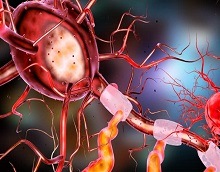 Branch atheromatous disease (BAD)-related stroke—a “meaningful” yet “understudied” subtype of ischaemic stroke—could be categorised as a separate disease entity, according to the findings of a prospective, multicentre study conducted across China and published recently in the journal Stroke.
Branch atheromatous disease (BAD)-related stroke—a “meaningful” yet “understudied” subtype of ischaemic stroke—could be categorised as a separate disease entity, according to the findings of a prospective, multicentre study conducted across China and published recently in the journal Stroke.
The study’s leading researchers note that BAD-related stroke warrants consideration as its own more specific disease state, largely owing to “distinct demographic, clinical and prognostic characteristics, along with a high incidence of early neurological deterioration and a low risk of stroke recurrence”.
Led by Jun Ni and Bin Peng (both Peking Union Medical College and Chinese Academy of Medical Sciences, Beijing, China), investigators conducted a nationwide, multicentre, prospective, observational cohort study across 20 Chinese hospitals from June 2021 to June 2023, enrolling patients aged 18–80 years with BAD-related stroke within 72 hours of onset. The study saw inclusion of patients with eligible single subcortical infarction in the territory of lenticulostriate artery and paramedian pontine artery, based on magnetic resonance imaging (MRI).
In Stroke, the authors initially posit that BAD-related stroke—despite emerging as a meaningful subtype of ischaemic stroke—has “remained understudied” in recent years. As such, they aimed to investigate the demographic, clinical, therapeutic and prognostic characteristics of the condition.
Clinical, laboratory and treatment data were collected at baseline, according to the investigators. Their primary endpoint was the proportion of good clinical outcomes (modified Rankin scale [mRS] score 0–2) at 90 days, while key secondary endpoints included early neurological deterioration, cerebrovascular events, major bleeding, and excellent outcomes (mRS score 0–1) upon 90-day follow-up.
“We [ultimately] enrolled 476 patients, with a median age of 60 years, and 70.2% [of whom] were male,” Ni, Peng and colleagues report. “The median National Institutes of Health stroke scale [NIHSS] score was 3 at enrolment. Involvement of the lenticulostriate artery (60.7%) was more common than the paramedian pontine artery (39.3%).”
The researchers found that early neurological deterioration occurred in 14.7% of patients, with a median time from onset of 38 hours being observed in the study. Additionally, rates of good and excellent clinical outcomes on mRS were 86.5% and 72%, respectively, and the 90-day stroke recurrence rate was 1.9%. Acute-phase therapy—from onset to seven days post-enrolment—”showed heterogeneity and was not associated with prognosis”, the authors relay.
Via multivariable logistic regression analysis, Ni, Peng and colleagues were also able to identify potential indicators of outcomes associated with BAD-related stroke, reporting that an NIHSS score ≥4 at admission and early neurological deterioration were found to be negative predictors of good clinical outcomes. However, extracranial artery stenosis was deemed to be a possible positive predictor of good outcomes in the study. Further analyses revealed that an age ≥60 years—in addition to NIHSS score ≥4 at admission and early neurological deterioration—may constitute negative predictors of excellent clinical outcomes as well.
In addition to their conclusion that it may therefore be appropriate to categorise BAD-related stroke as its own distinct disease entity, Ni, Peng and colleagues detail that “further high-quality studies” may serve to elucidate the role for acute-phase treatment strategies for BAD-related stroke, as outcomes with such strategies were “undetermined” in their findings.









